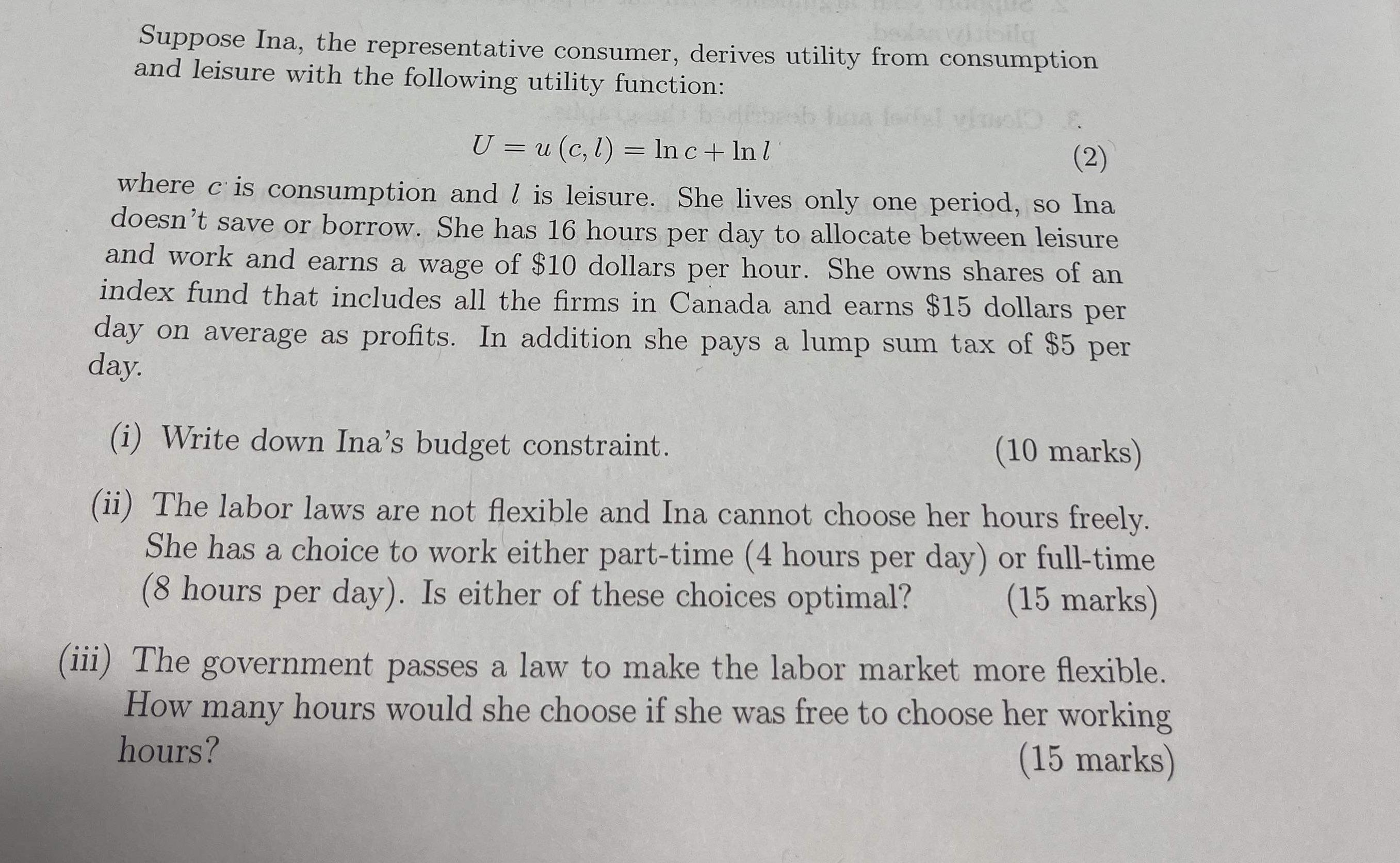Answered step by step
Verified Expert Solution
Question
1 Approved Answer
Suppose Ina, the representative consumer, derives utility from consumption and leisure with the following utility function: U = u (c, l) = ln c

Suppose Ina, the representative consumer, derives utility from consumption and leisure with the following utility function: U = u (c, l) = ln c + ln l (2) where c is consumption and is leisure. She lives only one period, so Ina doesn't save or borrow. She has 16 hours per day to allocate between leisure and work and earns a wage of $10 dollars per hour. She owns shares of an index fund that includes all the firms in Canada and earns $15 dollars per day on average as profits. In addition she pays a lump sum tax of $5 per day. (i) Write down Ina's budget constraint. (10 marks) (ii) The labor laws are not flexible and Ina cannot choose her hours freely. She has a choice to work either part-time (4 hours per day) or full-time (8 hours per day). Is either of these choices optimal? (15 marks) (iii) The government passes a law to make the labor market more flexible. How many hours would she choose if she was free to choose her working hours? (15 marks)
Step by Step Solution
★★★★★
3.29 Rating (149 Votes )
There are 3 Steps involved in it
Step: 1
i Inas budget constraint can be written as follows Total daily income Wage income Profits Tax Wage i...
Get Instant Access to Expert-Tailored Solutions
See step-by-step solutions with expert insights and AI powered tools for academic success
Step: 2

Step: 3

Ace Your Homework with AI
Get the answers you need in no time with our AI-driven, step-by-step assistance
Get Started


